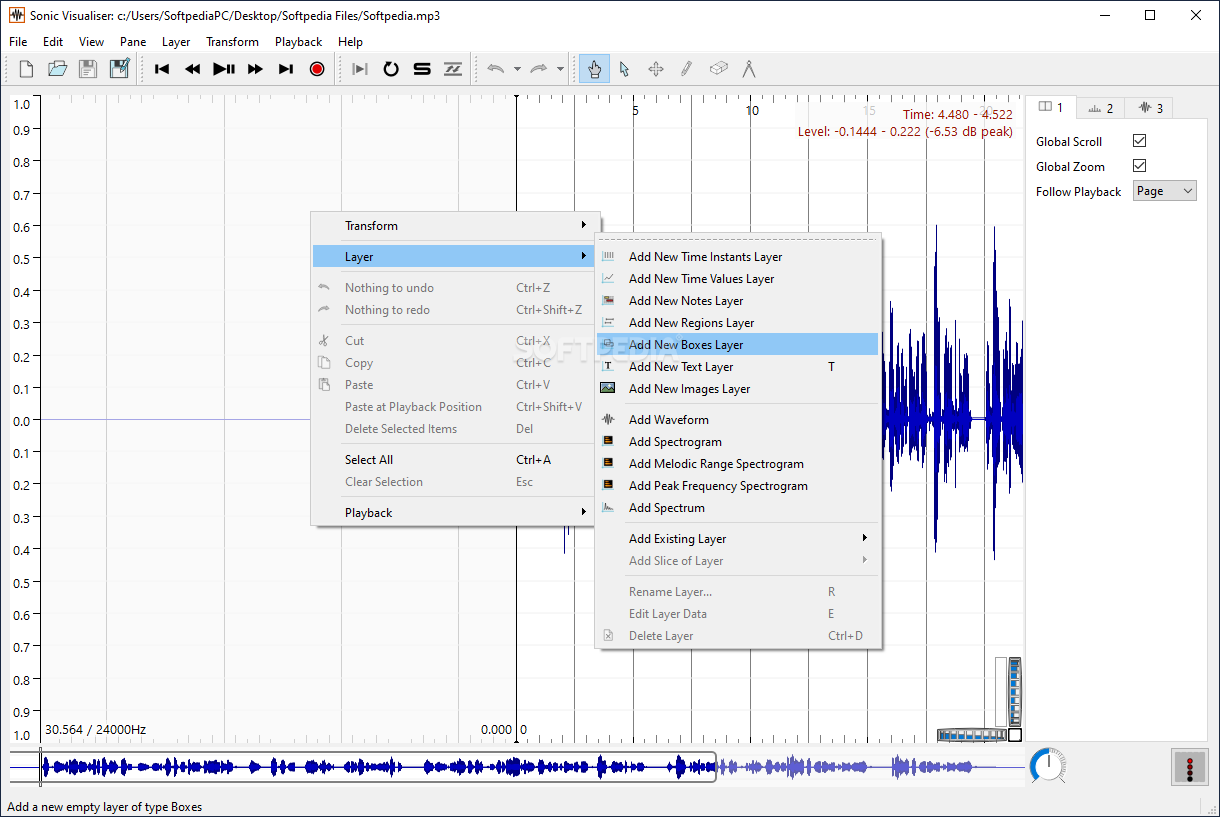

Note that normalisation implies that the joint 24-dim. If the setting is not ‘none’, then each chroma frame separately is divided by the chosen vector norm. chroma normalisation (none, maximum norm, L1 norm, L2 norm default: none): determines whether or how the chromagrams are normalised.Their harmonic amplitude follows a geometrically decreasing pattern, in which the i-th harmonic has an amplitude of ^, where “^” means “to the power of”.

spectral shape (0.5 - 0.9 default: 0.7): the shape of the notes in the NNLS dictionary.For values other than 0.0 the log-freq spectral bins are divided by ^, where “^” means “to the power of”. spectral whitening (0.0 - 1.0 default: 1.0): determines how much the log-frequency spectrum is whitened.Local tuning is only advisable when the tuning is likely to change over the audio, for example in podcasts, or in a cappella singing. tuning mode (global or local default: global): local uses a local average for tuning, global uses all audio frames.A value of 0 means that no bins will be changed. All bins below the first bin whose cumulative energy exceeds the quantile x will be set to 0. Consider the cumulative energy spectrum (from low to high frequencies). spectral roll-on (0 % - 5 % default: 0 %): this removes low-frequency noise - useful in quiet recordings.use approximate transcription (NNLS) (on or off default: on): toggle between NNLS approximate transcription and linear spectral mapping.spectral shape: (doesn't matter: no NNLS).use approximate transcription (NNLS): off.use approximate transcription (NNLS): on.The default settings (in brackets, below) are those used for Matthias Mauch’s 2010 MIREX submissions. The resulting chroma frames can be normalised by (dividing by) their norm (L1, L2 and maximum norm available). To get the chroma, this semitone spectrum is multiplied (element-wise) with the desired profile (chroma or bass chroma) and then mapped to 12 bins. The output of the NNLS approximate transcription is semitone-spaced. The processed log-frequency spectrum is then used as an input for NNLS approximate transcription (using a dictionary of harmonic notes with geometrically decaying harmonics magnitudes). * running standardisation: subtraction of the running mean, division by the running standard deviation. bin 2, 5, 8, …) corresponds to a semitone, even if the tuning of the piece deviates from 440 Hz standard pitch. * tuning, after which each centre bin (i.e. On this representation, two processing steps are performed: The spectrum is transformed to a log-frequency spectrum (constant-Q) with three bins per semitone. The plugin was originally developed to extract treble and bass chromagrams for subsequent use in chord extraction methods. NNLS Chroma analyses a single channel of audio using frame-wise spectral input from the Vamp host. System identifier – vamp:nnls-chroma:nnls-chroma

The plugins are described below, starting with the most comprehensive first. Implementation by Matthias Mauch and Chris Cannam. The methods used in the library were developed by Matthias Mauch, supported by the EPSRC-funded OMRAS2 Project.
#Sonic visualiser completo 4shared mac#
Then just use them in a host such as Sonic Visualiser or Audacity, which are also open source.Ī video of the installation on a Mac is available here.

#Sonic visualiser completo 4shared mac osx#
If you want to start right away, you can download readily compiled binaries for Windows and Mac OSX (Intel) (see here).


 0 kommentar(er)
0 kommentar(er)
